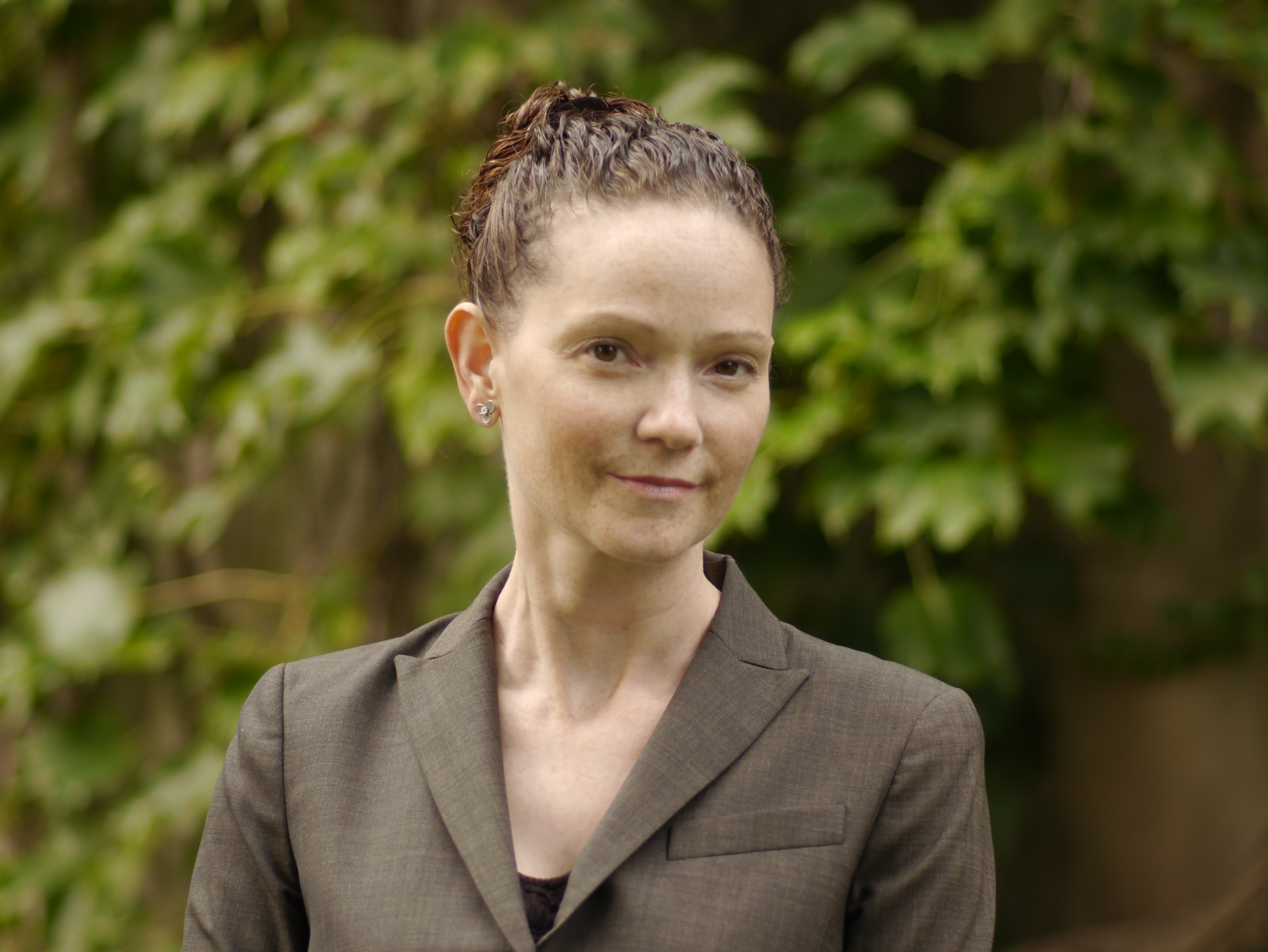
Media
RC1-2014-Kramer
Lisa Kramer: Behavioural Finance 101
Ever since the market crash of 2008, people have become more familiar with the term behavioural economics, but what is behavioural finance? Steve Paikin speaks with the University of Toronto's Lisa Kramer about this new field of study and the implications of Seasonal Affective Disorder on the market crashes of the past.
Dr. Lisa Kramer - Expert in Behavioural Finance & Neuroeconomics
Stirring up controversy in financial circles for over a decade with her seminal contributions bridging the gap between rational finance and behavioural finance, Dr. Lisa Kramer is no stranger to the dynamic marketplace of ideas. An expert on behavioural finance, investments, capital market seasonality, behavioral economics, neuroeconomics, and personal finance, Dr. Kramer captivates audiences with her real-time demonstrations of human biases. Participants come away with a deeper understanding of recent, state-of-the-art developments in the exciting field of behavioural finance. Dr. Kramer’s research has been profiled in The Wall Street Journal, US News and World Reports, The Washington Post, The Daily Telegraph, Business Week, Fast Company, The National Post, The Globe and Mail, and on CBC Television and Radio. She received her PhD in finance from the Sauder School of Business at the University of British Columbia and is an Associate Professor of Finance at the University of Toronto. She has also held the Canadian Securities Institute Research Foundation Term Professorship, and spent a sabbatical as a visiting scholar in the Psychology Department at Stanford University where she conducted ground-breaking research. http://www.speakers.ca/speakers/dr-lisa-kramer/ This video is brought to you by Speaker's Spotlight - http://www.speakers.ca - Canada's leading speakers' bureau. Book Dr. Lisa Kramer as a keynote speaker for your next event by contacting: info@speakers.ca
Behavioural Finance 101
TVO: The Agenda with Steve Paikin, June 10, 2015Television
URL: https://www.youtube.com/watch?v=MyBlv-x_iXw
Ever since the market crash of 2008, people have become more familiar with the term behavioural economics, but what is behavioural finance? Steve Paikin speaks with the University of Toronto's Lisa Kramer about this new field of study and the implications of Seasonal Affective Disorder on the market crashes of the past.
The Weird Reason You Should Buy Treasury Bonds Right Now
Time, May 20, 2015Online
URL: http://time.com/money/3891326/treasury-bonds-spring-sad/
University of Toronto researcher Lisa Kramer and her team found that monthly returns on Treasury bonds swing 80 basis points on average between October and April, peaking in the fall and bottoming out in the spring. “That kind of a systematic difference is huge,” says Kramer. The variation seems to be caused by SAD, a seasonal mood disorder that affects up to 10% of the population.
The end of bitcoin’? Major online exchange Mt. Gox goes bust
Toronto Star Newspapers, February 26, 2014Online
URL: https://www.thestar.com/business/2014/02/25/major_online_bitcoin_exchange_mt_gox_vanishes.html
Lisa Kramer, an associate finance professor in Toronto, said the shut down is not a surprise because Mt. Gox has been dealing with serious security issues for several months, including users recently being banned from making withdrawals. “Bitcoin has been operating in limbo for some time. The writing has been on the wall,” said Lisa Kramer, with the Rotman School of Management at the University of Toronto. “A lot of economists had been predicting that Bitcoins days are numbered.” Kramer said people use Bitcoin due to convenience and ease, and Mt. Gox shows that these reasons may no longer apply.
Roseman: Why we are wired to be lousy investors
Toronto Star Newspapers, December 27, 2012Online
I heard about the project from Lisa Kramer, associate finance professor at the University of Toronto, who studies the non-rational factors influencing our financial behaviour. For example, does seasonal affective disorder, also known as winter blues, lead to stock market crashes? “Most crashes happen in the fall, when daylight reduction is most rapid,” she says an interview at her Rotman School of Management office.
How to keep personal biases from torpedoing your retirement plan
The Globe and Mail, June 9, 2016Online
University of Toronto finance professor Lisa Kramer, who examines human behaviour in financial decision making, says seasonal depression can spur people to sell in a volatile market because they become despondent and risk averse. “What people will do is panic and sell, rather than riding it out,” she says. “A big implication for people close to retirement is that they will sell their whole nest egg right at the market crash and lock in at a low value.” A counter-strategy, she suggests, is to have a financial plan and stick to it. “The worst thing to do can be to act when we are feeling emotional.”
How robo-advisers are changing the way financial planning gets done
CBC/Radio-Canada, February 23, 2016Online
URL: http://www.cbc.ca/news/business/buckner-robo-adviser-1.3458644
"Generally when I talk to Canadian investors, they have no idea that our country's mutual fund fees are among the highest in the world," says Lisa Kramer, who teaches finance at the University of Toronto's Rotman School of Management. "And they also tend not to understand that they are literally paying their mutual fund company as much as three per cent of the value of their portfolio each year, whether their holdings go up or down in value," says Kramer. "So I expect we'll see some shock waves as the fee disclosures start to circulate."
Winter Blues and Time-Variation in the Price of Risk
Published by Journal of Empirical Finance
2005 Previous research has documented robust links between seasonal variation in length of day, seasonal depression (known as seasonal affective disorder, or SAD), risk aversion, and stock market returns. The influence of SAD on market returns, known as the SAD effect, is large. We study the SAD effect in the context of an equilibrium asset pricing model to determine whether the seasonality can be explained using a conditional version of the CAPM that allows the price of risk to vary over time. Using daily and monthly data for the US, Sweden, New Zealand, the UK, Japan, and Australia, we find that a conditional CAPM that allows the price of risk to vary in relation to seasonal variation in the length of day fully captures the SAD effect. This is consistent with the notion that the SAD effect arises due to the heightened risk aversion that comes with seasonal depression, reflected by a changing risk premium.
URL: http://www.sciencedirect.com/science/article/pii/S0927539804000830
Winter Blues: A SAD Stock Market Cycle
Published by American Economic Review
This is Your Portfolio on Winter: Seasonal Affective Disorder and Risk Aversion in Financial Decision Making
Published by Social Psychological and Personality Science
2012 This study found that people who suffer from seasonal affective disorder (SAD) displayed financial risk aversion that varied across the seasons as a function of seasonally changing affect. The SAD-sufferers had significantly stronger preferences for safe choices during the winter than non-SAD-sufferers, and they did not differ from non-SAD-sufferers during the summer. The effect of SAD on risk aversion in the winter was mediated by depression.
Seasonal Asset Allocation: Evidence from Mutual Fund Flows
Published by Journal of Financial and Quantitative Analysis
Forthcoming We analyze the flow of money between mutual fund categories, finding strong evidence of seasonality in investor risk aversion. Aggregate investor flow data reveal investor preference for safe mutual funds in autumn and risky funds in spring. During September alone, outflows from equity funds average $13 billion, controlling for previously documented flow determinants (e.g., capital-gain overhang). This movement of large amounts of money between fund categories is correlated with seasonality in investor risk aversion, consistent with investors preferring safer (riskier) investments in autumn (spring). We find consistent evidence in Canada, and in Australia where seasons are offset by six months.
URL: http://papers.ssrn.com/sol3/papers.cfm?abstract_id=1907904
Seasonal Variation in Treasury Returns
Published by Critical Finance Review
2015 We document a novel and striking annual cycle in the U.S. Treasury market, with a variation in mean monthly returns of over 80 basis points from peak to trough. We show that this seasonal Treasury return pattern does not arise due to macroeconomic seasonalities, seasonal variation in risk, the weather, cross-hedging between equity and Treasury markets, conventional measures of investor sentiment, seasonalities in the Treasury market auction schedule, seasonalities in the Treasury debt supply, seasonalities in the FOMC cycle, or peculiarities of the sample period considered. Rather, the seasonal pattern in Treasury returns is significantly correlated with a proxy for variation in investor risk aversion across the seasons, and a model based on that proxy is able to explain more than sixty percent of the average seasonal variation in monthly Treasury returns. The White (2000) reality test confirms that the correlation between returns and the proxy for seasonal variation in investor risk aversion cannot be easily dismissed as the simple result of data snooping.
URL: http://papers.ssrn.com/sol3/papers.cfm?abstract_id=1076644
Seasonally Varying Preferences: Theoretical Foundations for an Empirical Regularity
Published by Review of Asset Pricing Studies
2014 We investigate an asset pricing model with preferences cycling between high risk aversion and low EIS in fall/winter and the reverse in spring/summer. Calibrating to consumption data and allowing plausible preference parameter values, we produce returns that match observed equity and Treasury returns across the seasons: risky returns are higher and risk-free returns are lower or stable in fall/winter, and they reverse in spring/summer. Further, risky returns vary more than risk-free returns. A novel finding is that both EIS and risk aversion must vary seasonally to match observed returns. Further, the degree of necessary seasonal change in EIS is small.
Losing Sleep at the Market: The Daylight Saving Anomaly
Published by American Economic Review
2000
Losing Sleep at the Market: The Daylight Saving Anomaly: Reply
Published by American Economic Review
2002
Estimating the Equity Premium
Published by Journal of Financial and Quantitative Analysis
2010 Existing empirical research investigating the size of the equity premium has largely consisted of a series of innovations around a common theme: producing a better estimate of the equity premium by using better data or a better estimation technique. The equity premium estimate that emerges from most of this work matches one moment of the data alone: the mean difference between an estimate of the return to holding equity and a risk-free rate. We instead match multiple moments of U.S. market data, exploiting the joint distribution of the dividend yield, return volatility, and realized excess returns, and find that the equity premium lies within 50 basis points of 3.5%, a range much narrower than was achieved in previous studies. Additionally, statistical tests based on the joint distribution of these moments reveal that only those models of the conditional equity premium that embed time variation, breaks, and/or trends are supported by the data. In order to develop the joint distribution of the dividend yield, return volatility, and excess returns, we need a model of price and return fundamentals. We document that even recently developed analytically tractable models that permit autocorrelated dividend growth rates and discount rates impose restrictions that are rejected by the data. We therefore turn to a wider range of models, requiring numerical solution methods and parameter estimation by the simulated method of moments.
Biography
Lisa Kramer is Professor of Finance at the University of Toronto. An expert in behavioural finance, she primarily studies the way human characteristics such as risk aversion, mood, and emotions play a role in investor decisions and financial markets, with implications for portfolio management, investments, asset pricing, capital markets, and corporate decisions. Her scholarly work has appeared in economics, finance, and psychology journals, including the American Economic Review, the Journal of Financial and Quantitative Analysis, and Social Psychological and Personality Science. Her research findings have been profiled by the popular media, including The Washington Post, Bloomberg Business, Business Week, and The National Post. Her op/eds have appeared in outlets including The Wall Street Journal and The Globe and Mail. Originally from Vancouver, her PhD in finance is from the University of British Columbia and her undergraduate degree in economics and finance (honours) is from Simon Fraser University. Kramer is currently a Visiting Scholar at the University of California San Diego's Rady School of Management, and she previously spent a year as a Visiting Scholar in the Department of Psychology at Stanford University. She teaches undergraduate and graduate courses on behavioural finance and investments.
Additional Titles and Affiliations
SSRN Behavioral and Experimental Finance Abstracts : Advisory Board Member
Northern Finance Association : Board of Directors
Journal of Behavioral and Experimental Finance : Editorial Board Member
Journal of Multinational Financial Management : Associate Editor
Justwealth Financial : Advisory Board Member
Critical Finance Review : Associate Editor
Research Grants
Standard Research Grant
Organization: SSHRCGrant amount: 78000
Details:
2010‐2014
Standard Research Grant
Organization: SSHRCGrant amount: 65000
Details:
2010‐2014
Insight Development Grant
Organization: SSHRCGrant amount: 72000
Details:
2011‐2014
Insight Grant
Organization: SSHRCGrant amount: 114230
Details:
2014‐present
Insight Grant
Organization: SSHRCGrant amount: 170000
Details:
2013‐present




